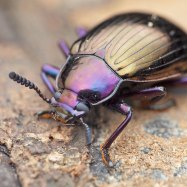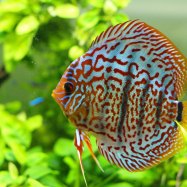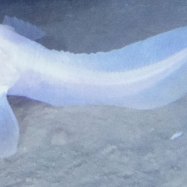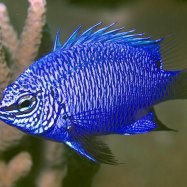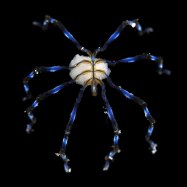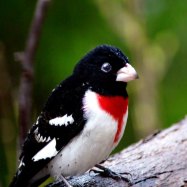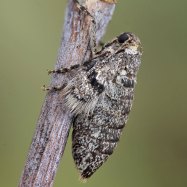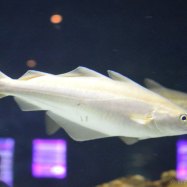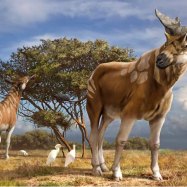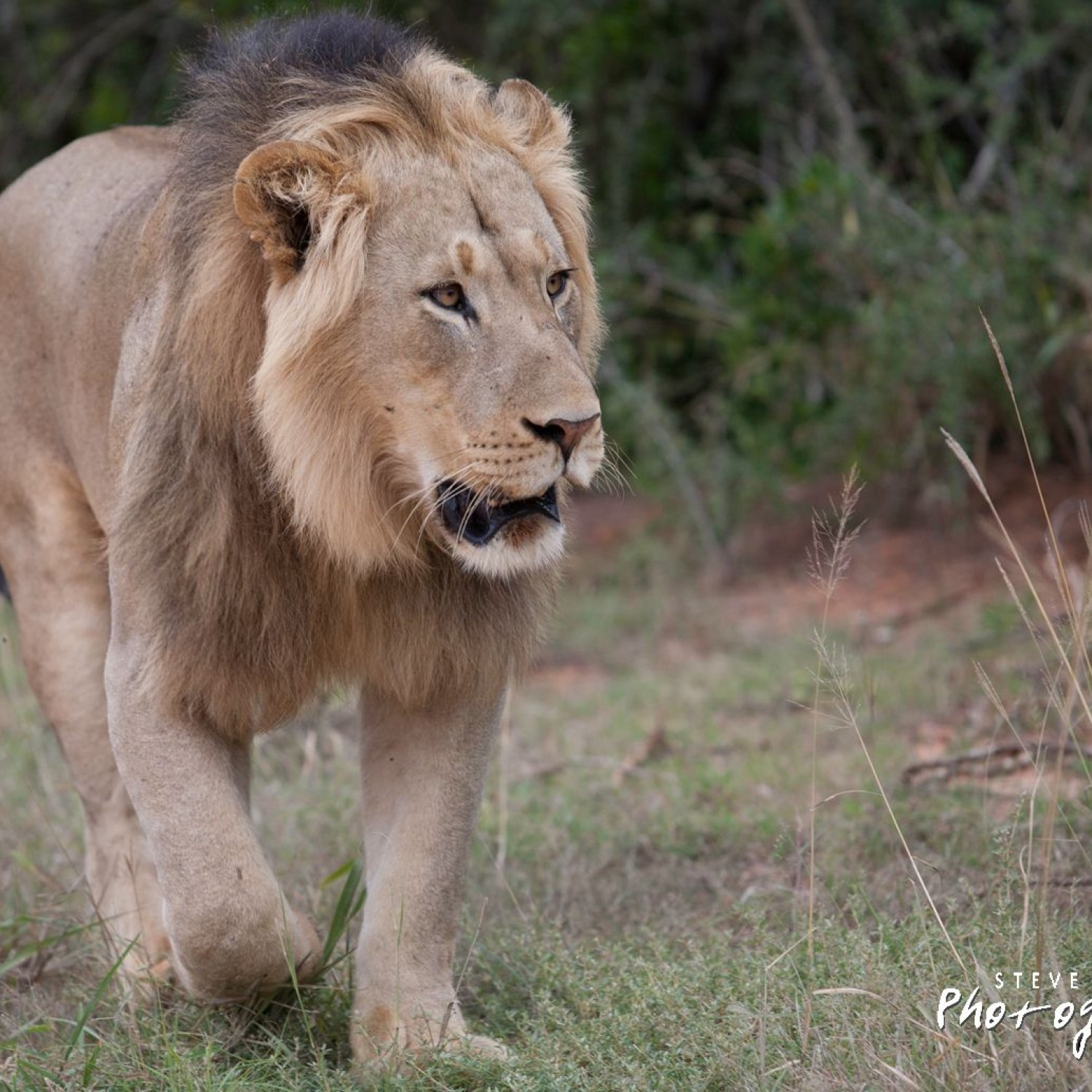
Cape Lion
2.5 to 3.3 meters
The Cape Lion, found in the Cape Province, is a stunning member of the Felidae family. With a muscular and stocky body shape, they can reach lengths of 2.5 to 3.3 meters. Unfortunately, due to human activities and habitat loss, these magnificent animals are now extinct in the wild. #AnimalFacts #CapeLion #Extinct #Felidae
Animal Details Summary:
Common Name: Cape Lion
Kingdom: Animalia
Habitat: Grasslands, Savannas
The Majestic Cape Lion: A Unique Species of Southern Africa
There is no doubt that lions hold a special place in our hearts and imaginations. These magnificent creatures have long been celebrated and revered in cultures around the world, known for their powerful presence, magnificent manes, and fierce hunting prowess. And while most of us are familiar with the African lion, the king of the savanna, there is a lesser-known cousin that deserves our attention: the Cape lion.Formally known as Panthera leo melanochaita, the Cape lion is a unique and fascinating subspecies of lion that is native to the grasslands and savannas of southern Africa Cape Lion. While it may not have received the same level of attention as the African lion, the Cape lion is a creature that is truly deserving of recognition and admiration.
A Brief Overview of the Cape Lion's Classification
Before we delve into the details of this fascinating animal, let's take a moment to understand a bit more about its classification. As indicated by its scientific name, the Cape lion belongs to the genus Panthera, which includes other big cats such as tigers, leopards, and jaguars. Its species is leo, which is Latin for "lion," and its subspecies is melanochaita, which refers to the dark-colored hair on its tail.Here's a quick breakdown of the Cape lion's classification:
- Kingdom: Animalia (Animals)
- Phylum: Chordata (Animals with a spinal cord)
- Class: Mammalia (Mammals)
- Order: Carnivora (Meat-eating animals)
- Family: Felidae (Cats)
A Home in the Grasslands and Savannas of Southern Africa
The Cape lion is primarily found in the grasslands and savannas of southern Africa, particularly in the country of South Africa. Specifically, it is believed that this subspecies originated in the Cape Province, which gave it its common name: the Cape lion. However, due to extensive human activity and hunting, the Cape lion became extinct in the wild by the beginning of the 19th century.Today, the only known Cape lions are found in captive breeding programs, and there have been efforts to reintroduce them into the wild. However, this is a challenging task, as the Cape lion's natural habitat has changed since its extinction Coopers Hawk. The grasslands and savannas that were once abundant are now taken over by urban development, making it difficult for these magnificent creatures to make a comeback.
A Carnivorous Diet Fit for a King
Like all lions, the Cape lion is a carnivorous animal, which means that it feeds exclusively on meat. While its diet may vary depending on the availability of prey, the Cape lion typically hunts and feeds on large herbivores such as zebras, buffaloes, and antelopes. These apex predators are skilled hunters, and their muscular and stocky bodies provide them with the strength and agility needed to take down their prey.Interestingly, the Cape lion has been known to exhibit slight dietary differences from other lion subspecies. For instance, researchers have observed that the Cape lion has a preference for larger prey, while other lions tend to target smaller animals. This could possibly be due to the abundance of large herbivore species in the grasslands and savannas of southern Africa.
The Distinctive Coloration and Body Shape of the Cape Lion
One of the most unique features of the Cape lion is its coloration. While most of us envision lions as having a tawny or golden color, the Cape lion's coat can range from pale to tawny. It is believed that this is due to the different environmental conditions in which the Cape lion lived, compared to other lion subspecies. For instance, the Cape lion's habitat in southern Africa is drier and contains more open grasslands, which could potentially have led to the evolution of its lighter coat.Another physical characteristic that sets the Cape lion apart is its body shape. While all lions are known for their muscular and stocky bodies, the Cape lion is said to be even more robust in appearance. This is thought to be an adaptation to its environment, as the Cape lion's territory is mostly flat and open, and being bulkier would give them an advantage when hunting prey.
The Length of the Cape Lion: A Surprising Fact
Aside from its physical appearance, the Cape lion also has a surprising fact about its length. While the average length of a lion is around 2.5 to 3 meters, the Cape lion is believed to have been even longer. In fact, there have been reports of Cape lions measuring up to 3.3 meters in length, making them one of the largest subspecies of lions to have ever existed.The Cape Lion's Sad Extinction
Despite its impressive features, the Cape lion's story has a tragic ending. As mentioned earlier, the Cape lion became extinct in the wild by the early 19th century. The primary reason for this was excessive hunting by humans, who saw no value in the subspecies and sought to protect their livestock. The Cape lion's population also suffered due to habitat loss and fragmentation, as well as diseases brought by domestic animals.Today, the Cape lion only exists in captivity, with a few individuals currently living in zoos and breeding programs. However, there is still hope that this subspecies can be reintroduced into the wild. Several conservation organizations and wildlife experts are working to bring back the Cape lion to its natural habitat, and with increased awareness and support, this incredible species may once again roam the grasslands and savannas of southern Africa.
The Significance of the Cape Lion to Our World
The Cape lion may no longer exist in the wild, but its legacy lives on. This unique subspecies of lion plays a significant role in the ecosystem of the grasslands and savannas, and its extinction has created a ripple effect on other species. As top predators, Cape lions help to maintain a balance in the food chain, which is crucial to the health of the entire ecosystem.Additionally, the Cape lion is a symbol of the importance of conservation and the impact of human activities on our environment. Its extinction is a reminder of the consequences of unchecked hunting and the need for responsible use and protection of our natural resources.
In Conclusion
In conclusion, the Cape lion is a fascinating and incredible species that deserves our recognition and protection. Its impressive physical features, unique adaptations, and significant role in the ecosystem make it a truly special subspecies of lion. While its existence is currently limited to captivity, there is still hope that one day, the Cape lion will once again roam the grasslands and savannas of southern Africa, where it rightfully belongs. By raising awareness and supporting conservation efforts, we can help ensure a future for these majestic creatures and the vibrant ecosystem they inhabit.

Cape Lion
Animal Details Cape Lion - Scientific Name: Panthera leo melanochaita
- Category: Animals C
- Scientific Name: Panthera leo melanochaita
- Common Name: Cape Lion
- Kingdom: Animalia
- Phylum: Chordata
- Class: Mammalia
- Order: Carnivora
- Family: Felidae
- Habitat: Grasslands, Savannas
- Feeding Method: Carnivorous
- Geographical Distribution: Southern Africa
- Country of Origin: South Africa
- Location: Cape Province
- Animal Coloration: Pale to Tawny
- Body Shape: Muscular and Stocky
- Length: 2.5 to 3.3 meters
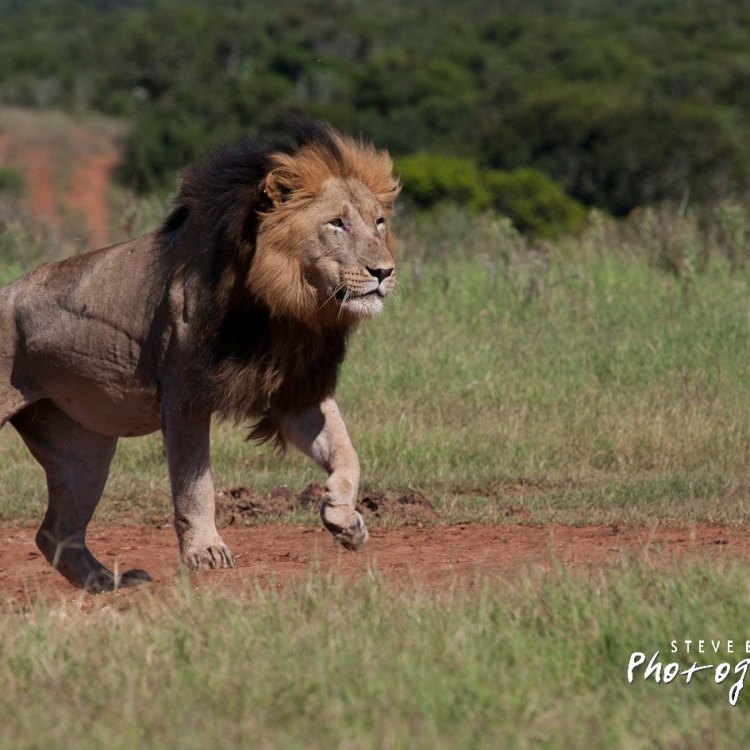
Cape Lion
- Adult Size: Large
- Average Lifespan: 10 to 14 years
- Reproduction: Sexual
- Reproductive Behavior: Polygynous
- Sound or Call: Deep roar
- Migration Pattern: Non-migratory
- Social Groups: Prides
- Behavior: Nocturnal
- Threats: Hunting, habitat loss
- Conservation Status: Extinct
- Impact on Ecosystem: Top predator
- Human Use: Hunting
- Distinctive Features: Dark mane in males
- Interesting Facts: Cape Lions have historically been known for their large size and dark manes.
- Predator: Humans
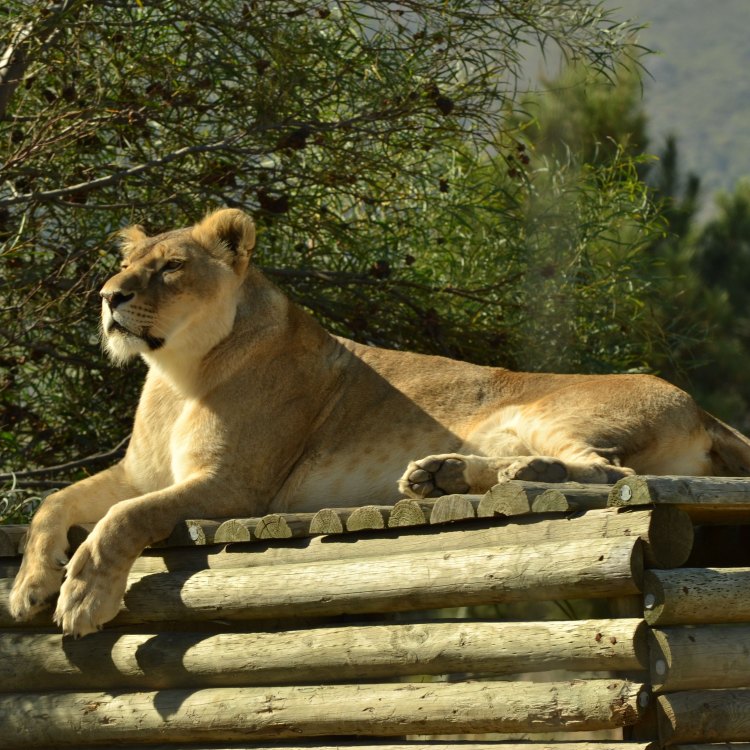
Panthera leo melanochaita
The Extinct Cape Lion: A Majestic Beast That Once Ruled the African Savanna
On the vast plains of Africa, an iconic symbol of strength, power, and courage once roamed freely. The Cape Lion, also known as the Panthera leo melanochaita, was a magnificent subspecies of lion that called the southern and eastern parts of the African continent its home.Adult Cape Lions were known for their impressive size, with males weighing up to 500 pounds and females up to 300 pounds. With their muscular bodies, sharp claws, and powerful jaws, they were fierce predators that dominated their ecosystem PeaceOfAnimals.Com. These majestic creatures had an average lifespan of 10 to 14 years, but their reign in the animal kingdom was cut short by human intervention, hunting, and habitat loss. Today, Cape Lions are sadly considered extinct.
The Life of a Cape Lion
Like other big cat species, Cape Lions were characterized by their sexual reproduction, with males and females coming together to mate and produce offspring. However, their reproductive behavior was different from other lions, as they were known to be polygynous. This means that a male would mate with multiple females within their pride, which consisted of a dominant male, several females, and their cubs.A distinctive feature of male Cape Lions was their dark manes, which grew out to be magnificent and thick, creating a striking contrast against their light fur. These dark manes were an excellent tool for attracting mates and asserting dominance within their pride. Interestingly, this was one of the reasons why they were highly sought after by hunters, as their dark manes made them stand out from other lion species.
The Sounds of the King of the Jungle
Deep roars echoed in the African savanna, signaling to other animals that the king of the jungle was near Crested Gecko. Cape Lions were known for their authoritative and deep roars, which could be heard up to 8 kilometers away. These calls were not just a form of communication, but they also served to intimidate and warn other predators to stay away from their territory.Their communication also extended to their social groups, known as prides. Prides included a dominant male, several females, and their cubs. The dominant male was responsible for protecting his pride and their territory, while the females were in charge of hunting for food. With their nocturnal behavior, Cape Lions were most active during the night, taking advantage of the cover of darkness to hunt their prey.
The Non-Migratory Lifestyle of Cape Lions
Unlike other animal species, Cape Lions were non-migratory, meaning they did not travel long distances to find food or seek better habitats. They were well adapted to their surroundings and had a consistent source of food, making nomadic movements unnecessary.Despite their lack of migration patterns, Cape Lions were known to have a significant impact on their ecosystem. As top predators, they played a crucial role in maintaining a balance in the food chain by controlling the prey population. Their presence kept herbivores in check, preventing overgrazing and promoting the growth of vegetation, crucial for other animals' survival.
The Threats to the Survival of Cape Lions
Unfortunately, the reign of the Cape Lion was cut short due to human interference and hunting. These magnificent creatures were highly sought after for their dark manes, which were seen as a symbol of strength and masculinity. As a result, they were extensively hunted and killed for the fur trade, diminishing their population rapidly.Furthermore, habitat loss due to human expansion and agriculture also had a significant impact on the survival of Cape Lions. As their natural habitats were destroyed, and their prey populations decreased, these big cats were forced to move closer to human settlements in search of food, leading to conflicts that often resulted in their deaths.
The Tragic End of the Cape Lion
Despite efforts to conserve the Cape Lion population in the early 1900s, their numbers continued to decline. By the 1920s, they were already considered a rare sight, and by the 1940s, they were declared extinct. This loss was a significant blow to the balance of the African ecosystem and a tragic end to a species that once ruled the savanna.The Legacy of the Cape Lion
Today, the Cape Lion lives on through scientific research and historical records. These majestic creatures have left behind a legacy of being a powerful symbol of Africa's rich wildlife. They continue to inspire conservation efforts and remind us of the importance of respecting and preserving our natural world.Their extinction serves as a devastating reminder of the devastating consequences of human activity on our planet's delicate ecosystem. It is a call to action for us to be more mindful of our actions and to take steps towards preserving and protecting the remaining species on our planet.
In Conclusion
The Cape Lion was an iconic and magnificent creature that once ruled the African savanna. Their large size, dark manes, and deep roars made them a symbol of strength and power. However, human activities, including hunting and habitat loss, led to their tragic end and extinction. Today, they serve as a reminder of the impact of our actions on the delicate balance of our ecosystem and the importance of conservation efforts to protect our planet's remaining species. The Cape Lion may be gone, but their legacy lives on, inspiring us to strive towards a future where humans and wildlife can coexist harmoniously.
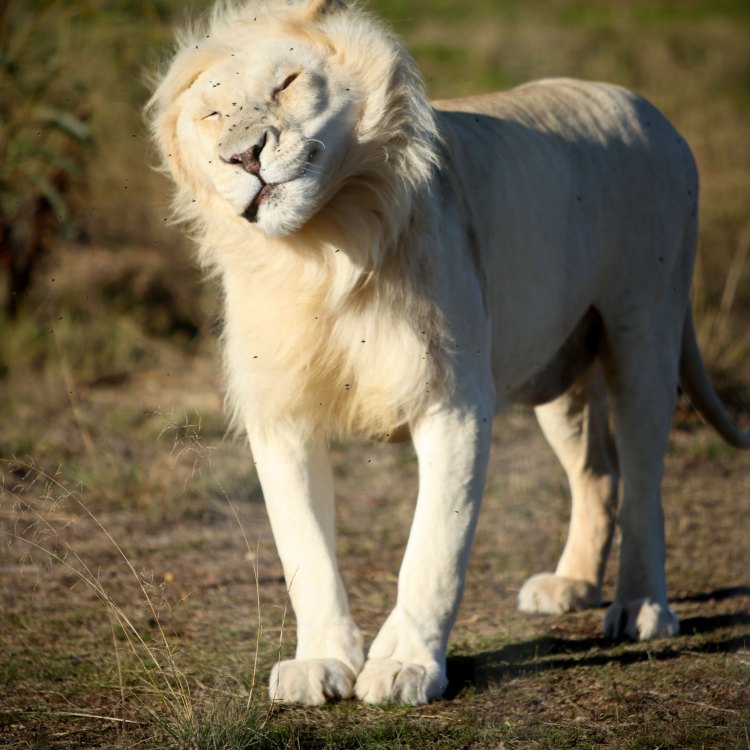
The Majestic Cape Lion: A Unique Species of Southern Africa
Disclaimer: The content provided is for informational purposes only. We cannot guarantee the accuracy of the information on this page 100%. All information provided here may change without prior notice.

